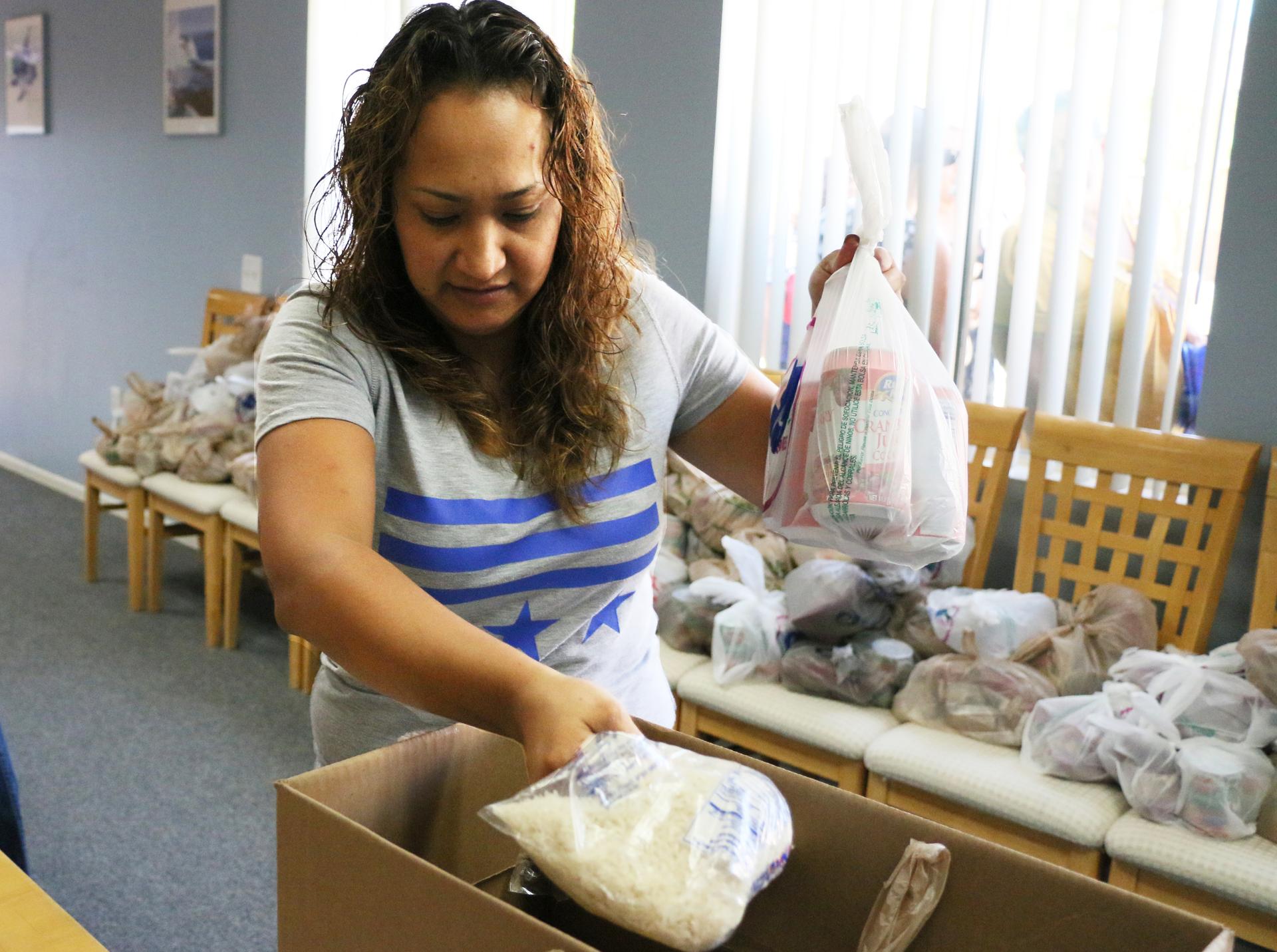After school each day, Guadalupe Rangel picks up her teenage sons in Calexico, just north of the California-Mexico border.
Guadalupe Rangel scoops up hearty servings of homemade pulled pork, rice and coleslaw for her two teenage sons.
This simple plate of food is not something Rangel and her sons take for granted. There was a time when she didn’t have enough money to even buy eggs, she says, her eyes welling up with tears. She was devastated to see her children hungry and losing focus in school.
“We were desperate, and it was very difficult,” she says. “I felt a lot of depression just knowing that I couldn’t give them the basics.”
Rangel lives in Imperial Valley, a largely rural county in southeastern California that borders Mexico. The area is historically one of the most productive farm regions in the nation, ranking in the top 10 percent of all agricultural sales in the US.
That makes the next statistic even more startling: the percentage of children going hungry in Imperial Valley ranks among the worst 10 percent of all US counties.
Imperial County has the highest rate of child hunger in the entire state of California, with close to 40 percent of kids not getting enough food. The majority of the county — more than 80 percent — is Hispanic.
Persistently low wages, unstable employment and severe drought conditions have taken a major toll on local agricultural workers and their families. And, that’s hitting young people the hardest.
Rangel’s older son, Gilbert, 17, is in high school. He has his sights set on junior college, and then a four-year-university in the nearest big city of San Diego. He’s shy and speaks softly, but confidently says he wants to be an engineer. Some of his friends have already left school to work in the fields, but he says that’s not a life he wants for himself.
Rangel and her sons live in a modest, subsidized apartment for farmworker families in Calexico, California, just minutes north of the US-Mexico border. But, work hasn’t been easy to find here. With the family struggling to pay the rent, Rangel’s husband began taking high-interest loans and got into debt.
“For months, we went through a low period,” Rangel says. “It’s just sad because there wasn’t a lot of money.”
That meant rationing food.
“There was a time when my oldest wouldn’t eat,” Rangel says. “He wasn’t able to focus or study properly.”
The same thing happened to her younger son, Jesus, now 14 years old. “His stomach was empty, so he couldn’t think at school,” she says. “He was getting headaches,” she adds, “and he didn’t put adequate attention into his work.”
Rangel’s sons are not alone. Counselors at Calexico High School say many students aren’t getting enough to eat. “We have a lot of families in need,” says Lori Blek, a student well-being facilitator at the school.
“If a student comes in who hasn’t had breakfast, it’s going to affect their learning because they’re going to focus on their stomach,” she adds.

Hunger can impact children’s education, growth and development, and overall health for the rest of their lives, according to experts.
Sylvia Martinez, a health clerk at Calexico High School, says almost half a dozen students come into the nurse’s office each day asking for food. “They experience dizziness or weakness,” she says.
The school district provides free meals to qualified students, including lunch, but some counselors say it’s not enough for the average teenager’s diet.
Living week to week
Things improved for Rangel’s family when her husband, the kids’ stepdad, eventually found steady work in the lettuce fields. But, his job is an eight-hour drive north, in the Central Valley farming town of Salinas.
During the picking season, he only comes home to visit his family for the holidays. If he’s away from work for even a few days, he might find his job filled by someone else when he returns. But, Rangel says this situation is far better than having no work at all.
“It’s frustrating,” Rangel says. “There are a lot of people looking for work, and there’s not a lot of work. But, we do what we can with what we have.”
Today, Rangel drops by the apartment complex next door for a free food distribution. There’s still an hour until the doors open, and a long line of mothers and grandmothers – many with young children by their side – has already formed along the side of the building. They wait patiently in the intense Southern California sun, as youngsters run around playing hide-and-go-seek in the shade.
As soon as the door swings open, everyone inches forward, one-by-one, into the room. Each family picks up a big cardboard box full of donated, non-perishable food items: rice, a bag of cranberries, taco shells, a packet of pasta shells, canned spaghetti sauce, and a six-pack of cranberry juice.
The distribution, organized by the Imperial Valley Food Bank, takes place the last week of every month, when many families in the area run out of food.
“People only have so much money to get through the end of the month, and there’s always more month than money, says Sara Griffen, the food bank’s Executive Director.
“This county has always had a very large population of poor people,” Griffen says. “It remains predominantly an agricultural area. We don’t really have other industries. It’s just hard to find a job here.”
“Even though there could be two parents working 40 hours a week or more, they aren’t necessarily able to feed a family on what they’re making,” Griffen says.
On top of that, California’s multi-year drought has dried up large swaths of fertile farmland.
“Drought looks like no food on the table. Drought looks like no jobs to be had,” says Rhea Suh, President of the Natural Resources Defense Council.
She said it’s disproportionately impacting minority communities in the US.
“Drought looks like an entire economic sector of California, the agricultural sector, being put down to its knees because there’s not enough water,” she says.
Providing for the family
Rangel’s husband makes around $1,600 a month at his job packaging lettuce in Salinas. After paying rent for two apartments and utilities, there’s not much left for the family.
His job up north only lasts about half the year. But, Rangel says it’s still better than before, when he could only find 25 hours of work a week in Imperial Valley. And, that too, at just eight dollars an hour.
“It didn’t make sense that he was working with food and at the same time our family was not eating,” Rangel says. “Here I was in the U.S., but I could not achieve my dreams.”
More: Immigrant student life in the US
But, with her husband’s steadier job up north, the family is eating normally again, at least for now.
“I always want my kids to have food in the morning, afternoon, and evening,” she says. “Always.”
She knows that could change at any time. “I think I’m stable, but not that stable. If he doesn’t work one week, the stability is gone.”
Still, she has high hopes for her sons.
“I want them to study, enter the middle class, and be happy in a good career.”
This story was produced with support from the Institute for Justice and Journalism. Selina Espinoza and Carlos Moreno assisted with translation.
Share your thoughts and ideas on Facebook at our Global Nation Exchange, on Twitter @globalnation, or contact us here.
